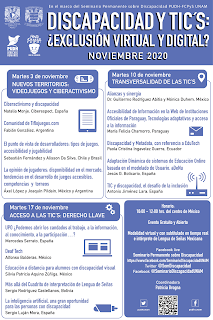En What to look for in an accessibility audit explican los diferentes tipos de auditoría que existen:
- Level-of-effort (LOE) Audit: A report which estimates the magnitude and cost of an accessibility remediation project. The report includes the number of pages to fix and the number of defects on each page.
- Risk Audit: Identifies severe and critical blockers that users with disabilities would encounter. This report does not include remediation recommendations.
- Detailed Audit: Identifies improvement based on the client’s preferred standards (WCAG 2.0 A/AA, WCAG 2.1 A/AA, or Section 508) using automated and manual testing that covers the scope of the client’s choosing. This report provides remediation recommendations.
- Detailed audits are also available for specific regulations or technologies – such as CVAA, Kiosks, and native mobile apps.
- Screen Reader Acceptance Testing: Experts will test a task/use case/user flow for assistive technology/browser/OS version combinations of the client’s choosing and provide a rating on a scale of difficulty or failure.
- Validation Audit: Performed on a web page, set of web pages, or applications that have previously undergone an audit by Deque. Validation audits may also be done on mobile apps or PDFs too.
- Usability Testing: Accessibility (conformation to WCAG or Section 508) does not always lead to usability. Usability testing reveals what’s usable to people with disabilities.
- Accessibility Conformance Statements: A Conformance Statement is a document from a trusted third party that details the level of accessibility for your organization’s website or application.
- Voluntary Product Accessibility Template (VPATs): A procurement report required for selling web-based software to the US Federal Government under Section 508.
- Design Audits: A Design Comp Accessibility Annotation (DCAA), is a markup of UX and UI wireframes and comprehensive designs (comps) with accessibility requirements for developers.




